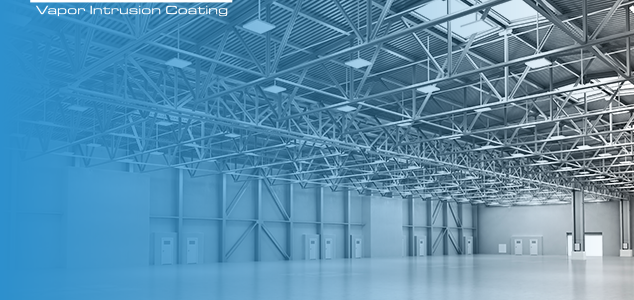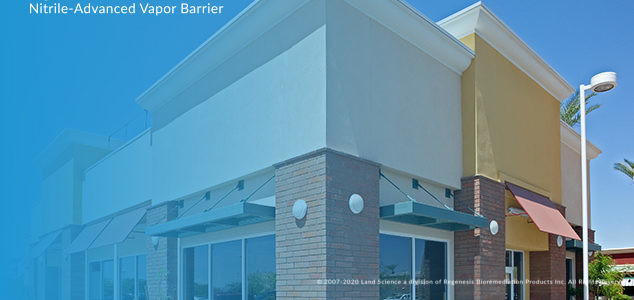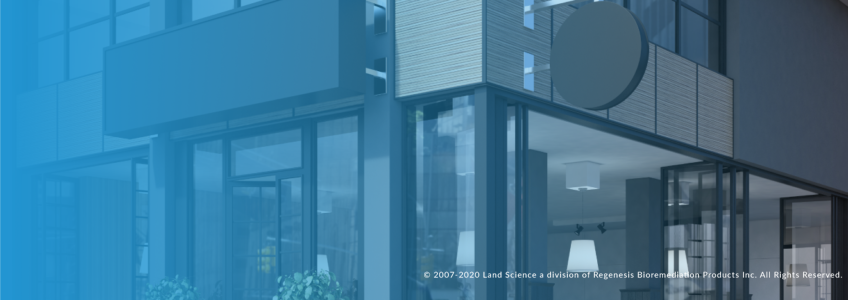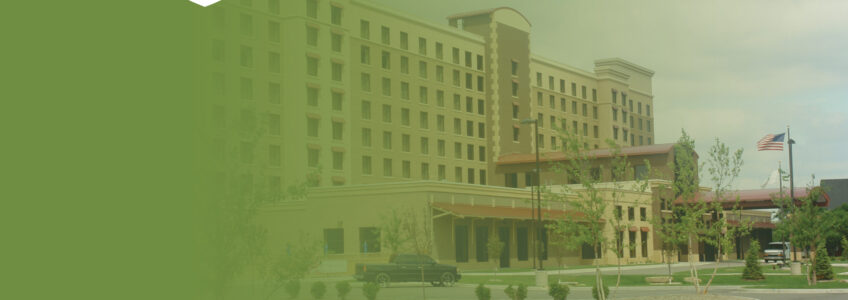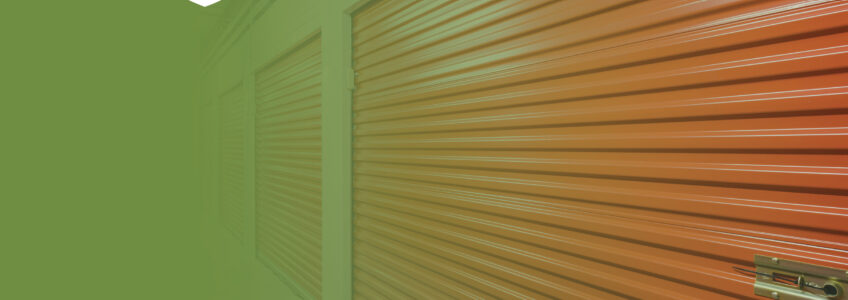TerraShield Installed at New, State-of-the-Art Aquatic Research and Education Center
Project snapshot highlights:
- Volatile Organic Contaminants
- State-of-the-Art Research and Education Center
- 8,500 Square Feet Installed
In Michigan’s Upper Peninsula, Lake Superior State University (LSSU) is constructing a $14.5 million expansion that will house its state-of-the-art Center for Freshwater Research and Education (CFRE). When completed, the CFRE building will include freshwater testing laboratories, classrooms, an aquatic learning center, and an expansion of LSSU’s internationally-renowned fish hatchery. The new building is being constructed in an area of past spills of volatile organic contaminants (VOCs), posing a potential vapor intrusion risk. Assessing the risk and the options to mitigate it, the project team opted to install TerraShield® with a TerraVent® passive venting system. Terrashield was determined to be the vapor mitigation solution providing the highest level of protection at a competitive cost and offering superior installation efficiencies as compared to alternative vapor intrusion mitigation approaches.
A Growing Manufacturing Company Brings New Jobs to Lansing Area following Retro-Coat Treatment
Project snapshot highlights:
- Retro-Coat Allows Repurposed Industrial Building to Create Jobs in Michigan Community
- 140,000 Square Feet Manufacturing Facility Successfully Treated
A growing manufacturer looking to expand its operations purchased a vacant industrial facility in Lansing, Michigan, where chlorinated solvents were used and spilled into the subsurface. The environmental consultant was asked to address the suspected vapor intrusion concerns resulting from the former industrial operations. In working with the Michigan Department of Environment, Great Lakes & Energy (EGLE), the consultant proposed utilizing the Retro-Coat® Vapor Intrusion Coating System, in combination with passive venting, to ensure safe indoor air for the future workers. EGLE approved the vapor mitigation approach to address the potential indoor air concerns. The Retro-Coat installation was sequentially phased in accordance to the construction schedule, where the Certified Applicator worked closely with the general contractor and the consultant to meet project expectations and deadlines. Since the Retro-Coat system will act as the wearing surface at this facility, the Retro-Coat Top WB topcoat was also applied to maintain the desired aesthetic of the building owner. Following the Retro-Coat and passive venting system’s successful application, the potential exposure pathway has been mitigated, and the site is eligible for restricted site closure designation by EGLE.
TerraShield Protects Future Occupants from Harmful Vapor Intrusion
Case study highlights:
- TerraShield was considered the safest and most effective choice to protect against the high levels of vapor contaminants found onsite
- The installation of TerraShield eliminated potential health risks for future onsite employees posed by the hazardous vapor intrusion exposure from the TCE and PAH contaminants
- TerraVent, a low-profile trenchless vapor collection system, was installed on this site
A large automotive and supply company planned to build its new corporate headquarters on a 4.5-acre brownfield site recently acquired in Southfield, MI. Soil and groundwater sampling on the property revealed the presence of trichloroethylene (TCE) and polynuclear aromatic hydrocarbons (PAHs). TCE was also identified in soil gas beneath the site. Within the footprint of the planned building itself, contaminant concentrations were found to be in excess of applicable indoor air quality screening levels. The developer utilized brownfield funding from the local authority to conduct the necessary environmental remediation measures.
Nitra-Seal Ensures Long Term Vapor Intrusion Protection for Quick Service Restaurant
Case study highlights:
- Quick service retail restaurant required an effective preemptive vapor mitigation solution to protect future employees and customers from potential vapor intrusion risks
- The project development team determined Nitra-Seal was the safest, most expedient and cost-effective vapor barrier system to install on this site
- Land Science Certified Applicator S&H Waterproofing and Construction, installed Nitra-Seal and performed smoke testing as part of the quality control process to confirm proper installation of the barrier
This project development site is a newly opened quick-service restaurant in Conyers, Georgia. Offsite chemical spills from historical operations had resulted in low-level volatile organic compounds (VOCs) released to the subsurface, creating a potential for vapors to intrude into new buildings constructed in the affected area. Recognizing the risk and placing emphasis on future workers’ safety, the forward-thinking client decided that a preemptive measure be instituted, requiring the installation of a vapor mitigation system as part of the construction specification.
Ease of Installation Saves Time and Money for Preemptive Solution To Mitigate Potential Gasoline Vapors
Project snapshot highlights:
- Nitra-Seal protects future restaurant workers and guests
- Former Gas Station
Property developers for a national restaurant chain planned a new restaurant building on an old gas station in Galveston, Texas. It is common practice in the retail restaurant industry that when confronted with building a restaurant on a former gas station, the property developers will specify a vapor mitigation system (VMS) into the construction plan. The VMS serves as a preemptive measure to address gasoline contaminants that might have escaped detection during the site closure process. In these instances, the property developers require that the vapor mitigation system installation be completed efficiently and at a competitive cost while providing comparable or better chemical resistance. After evaluating VMS options, the property development team specified Nitra-Seal as the technology best suited for this purpose. According to the Land Science certified applicator, in comparing their experience installing generic styrene-butadiene-rubber asphalt emulsions, Nitra-Seal’s spray-applied nitrile-advanced asphalt latex core material was easier to apply and cured more rapidly. This saved time and money for the VMS installation, improving the project’s overall construction efficiency, and enabling the restaurant to proceed toward its opening.
Nitra-Seal Ensures Worker Safety For New Office Campus
Project snapshot highlights:
- New Office Campus in Pennsylvania
- Site-Specific Design for Unique Foundation Layout
- 16,000 Square Feet Installed
An established, construction services company was developing a new corporate campus on a former industrial manufacturing site where chemical degreasing agents were used. Prior to the building’s planned construction, an investigation was conducted, identifying chlorinated volatile organic compounds (VOCs) in the subsurface. Based on the investigation results, the project stakeholders specified the installation of a vapor mitigation system to address the potential VOC vapor intrusion risk to future building occupants. The consultant and their client were familiar with Land Science’s full suite of vapor barrier systems and had installed their vapor mitigation technologies at other building sites in the past. The team specified Nitra-Seal® for this project based on its top-performing chemical resistance and installation efficiencies compared to other spray-applied barrier systems considered. The building’s unique foundation layout required a nuanced approach and site-specific design support from the Land Science team. The Land Science Certified Applicator installed the Nitra-Seal vapor mitigation system efficiently and according to specifications, allowing the new office campus construction to proceed without delay.
Nitra-Seal Facilitates National Restaurant Chain Expansion into Growing Texas Market
Project snapshot highlights:
- Petroleum Hydrocarbon Vapor Contaminants Effectively Mitigated
- Solution Chosen Based on Best Combination of Chemical Resistance,Installation Efficiency and Price
An expanding quick-service restaurant (QSR) chain planned a new store in the rapidly growing central Texas market at a former gasoline station site. Although there was no active environmental incident associated with past use, it is common for petroleum hydrocarbons (PHCs) to remain in the subsurface, undiscovered at former gas station sites. Using their knowledge and experience in developing similar properties, the QSR client recognized the potential risk of petroleum hydrocarbon (PHC) vapor intrusion. To ensure their future associates’ and guests’ well-being, the QSR client specified installing the Nitra-Seal® vapor mitigation system as a preemptive measure to protect against PHC vapor intrusion. They chose Nitra-Seal because it provided the best combination of chemical resistance, installation efficiency and price compared to other similarly priced vapor barrier systems. The Land Science certified applicator completed the installation according to manufacturer recommendations within aggressive time and budget constraints, allowing the restaurant to proceed toward its scheduled opening in the Fall of 2020.
Nitra-Seal is Integral to Revitalization of Downtown Hayward
Project snapshot highlights:
- Downtown Revitalization Effort Moves Forward
- 70,000 Square Feet Installed
Lincoln Landing is a mixed-use development project in Hayward, California that includes 474 affordable to moderate-income residences and 82,000 square feet of retail space. Petroleum hydrocarbon vapors migrating from an offsite source posed a potential vapor intrusion risk to future building occupants. The superior chemical resistance and constructability afforded by the Nitra Seal® nitrile-advanced asphalt latex factored into the project development team’s selection of a vapor mitigation solution. Nitra-Seal does not require taped seams, eliminating potential vapor breakthrough along the weaker taped-seam joints present in other vapor mitigation systems. This feature was especially important for this project, given the number of penetrations and terminations required by the building floor plan, including seven elevator shafts. The installation was successful, allowing the development of the property to move forward while eliminating exposure to potentially harmful petroleum hydrocarbon vapors. City officials expect Lincoln Landing to help revitalize downtown Hayward as it replaces a department store building that had been vacant for over a decade. Lincoln Landing is the first Nitra-Seal project initiated in Alameda County.
Leading Hotel Chain Moves Forward with Brownfield Site Construction Following Installation of Vapor Barrier System
Project snapshot highlights:
- Hotel Brand Expansion Into New Market
- TerraShield Protects Guests and Employees at Hotel
- 20,000+ Square Feet Installed
A leading hotel brand breaks ground on a new residential-styled suite hotel in an expanding commercial district in Ohio. The first of its kind in the state, the brownfield site required a safe and effective vapor barrier system to mitigate soil gas vapor contaminants from former industrial activities in the area, including spilled chlorinated solvents and petroleum hydrocarbons. The environmental consultant proposed installing a TerraShield® vapor barrier system to eliminate the potential exposure risk of building staff and guests to these vapors. The project development team agreed TerraShield afforded the best available technology to address vapor intrusion in a structure with numerous penetrations and terminations. In addition to providing superior chemical resistance, TerraShield does not require taped seams which markedly improves the installation efficiency. The Land Science certified applicator installed TerraShield successfully, maintaining the schedule and allowing the hotel to proceed toward its grand opening.
Chlorinated Solvent Risk Abated Making Way for Future Storage Facility
Project snapshot highlights:
- Future Tenants Protected From Chlorinated Solvents
- Land Science Offers Site-Specific Design Support
- 38,000 Square Feet Installed
The project site is a modern, climate-controlled self-storage facility that includes all-in-one moving, packing, and storage services for its customers. The building was developed on a former industrial brownfield at the site of a former factory. As part of Maryland’s Voluntary Cleanup Program, the environmental consultant completed a Phase II investigation, finding elevated chlorinated solvent contaminants in the soil gas. The Maryland Department of Environment required the installation of a vapor mitigation system over a portion of the building. However, in working with the consultant, it was ultimately determined that a vapor barrier spanning the entire building footprint would be necessary to protect the future building tenants fully. Based on chlorinated solvent concentrations, TerraShield® was specified to provide the highest level of chemical resistance and long-term barrier performance available on the market. The project required active venting and a site-specific design, leveraging Land Science’s vapor barrier design expertise. Additionally, the TerraShield vapor mitigation system included an extended material warranty to provide the project stakeholders added assurance that building occupants would be protected long into the future.



